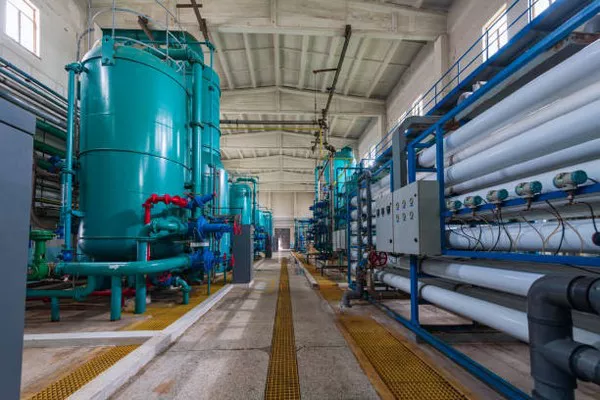Air conditioning (AC) systems are essential for comfort in modern vehicles, especially during hot weather. One of the critical components of an automotive AC system is the AC compressor clutch. This clutch engages and disengages the AC compressor, controlling the flow of refrigerant and ensuring the system operates efficiently. Over time, wear and tear can affect the clutch’s functionality, often leading to a need for adjustment or replacement. Shimming an AC compressor clutch is a practical solution to restore its proper function without the need for a full replacement. This article provides a detailed guide on how to shim an AC compressor clutch, ensuring optimal performance and longevity of the AC system.
Understanding the AC Compressor Clutch
The AC compressor clutch consists of three main components: the pulley, the electromagnetic coil, and the clutch plate. When the AC system is activated, the electromagnetic coil energizes, creating a magnetic field that pulls the clutch plate towards the pulley. This engagement allows the compressor to circulate refrigerant through the system. Over time, the gap between the clutch plate and the pulley can increase due to wear, leading to inefficient operation or complete disengagement.
Symptoms of a Faulty AC Compressor Clutch
Before diving into the shimming process, it’s crucial to identify the symptoms of a faulty AC compressor clutch. Common signs include:
- Intermittent Cooling: The AC system may work sporadically, providing inconsistent cooling.
- Clicking Noise: A noticeable clicking sound when the AC is turned on, indicating the clutch is struggling to engage.
- Visual Inspection: Observing a larger than usual gap between the clutch plate and pulley.
- AC Not Cooling: The system may fail to cool the air entirely if the clutch does not engage properly.
- If these symptoms are present, shimming the clutch could be a viable solution.
Tools and Materials Required
To shim an AC compressor clutch, you’ll need the following tools and materials:
- Shim kit (variety of shim thicknesses)
- Feeler gauge
- Screwdrivers
- Wrenches
- Pulley puller tool
- Safety glasses and gloves
- Clean cloth or rag
Step-by-Step Guide to Shimming an AC Compressor Clutch
Step 1: Safety Precautions
Before starting any automotive repair, ensure the vehicle is parked on a flat surface and the engine is off. Disconnect the negative terminal of the battery to prevent any accidental electrical discharge. Wear safety glasses and gloves to protect against injury.
Step 2: Accessing the AC Compressor Clutch
Locate the AC compressor, typically found at the front of the engine bay. Depending on the vehicle model, you may need to remove additional components such as the serpentine belt or engine covers to access the compressor. Refer to the vehicle’s service manual for specific instructions.
Step 3: Measure the Clutch Gap
Use a feeler gauge to measure the gap between the clutch plate and the pulley. The typical gap should be between 0.3mm and 0.6mm (0.012 inches to 0.024 inches). If the gap exceeds this range, shimming is necessary to restore proper function.
Step 4: Remove the Clutch Plate
Using a wrench or screwdriver, remove the retaining bolt or snap ring that holds the clutch plate in place. Carefully pull the clutch plate away from the pulley. In some cases, a pulley puller tool may be required to remove the plate without causing damage.
Step 5: Select and Insert Shims
Shims are thin washers that adjust the distance between the clutch plate and the pulley. Select the appropriate thickness of shims from your kit. It’s often best to start with a thinner shim and add more if necessary. Place the shims onto the shaft where the clutch plate was mounted.
Step 6: Reinstall the Clutch Plate
Reattach the clutch plate onto the shaft, ensuring it sits evenly on the shims. Secure it with the retaining bolt or snap ring. Recheck the gap using the feeler gauge. If the gap is still too wide, remove the plate and add additional shims until the desired gap is achieved.
Step 7: Test the Clutch Engagement
Once the correct gap is set, reconnect the negative terminal of the battery. Start the engine and activate the AC system. Observe the clutch operation, ensuring it engages and disengages smoothly without excessive noise. If the clutch engages correctly and the AC system cools effectively, the shimming process is successful.
Step 8: Reassemble and Clean Up
Reinstall any components removed to access the AC compressor, such as the serpentine belt or engine covers. Ensure all tools and materials are accounted for and clean the work area. Dispose of any used shims or old parts properly.
Troubleshooting and Tips
Persistent Issues: If the clutch still fails to engage properly after shimming, the issue may lie within the electromagnetic coil or the compressor itself. In such cases, further diagnosis or professional repair may be necessary.
Regular Maintenance: Periodically check the clutch gap as part of regular vehicle maintenance to prevent future issues.
Quality Parts: Use high-quality shims and tools to ensure a precise and durable repair.
SEE ALSO How Much Is A Trane Air Conditioner Compressor
Conclusion
Shimming an AC compressor clutch is a cost-effective and practical solution to address issues with clutch engagement. By carefully measuring the gap, selecting appropriate shims, and following a systematic approach, you can restore the functionality of the AC system and enjoy consistent cooling performance. Regular maintenance and attention to detail will prolong the life of the compressor and prevent future problems. If you encounter difficulties during the process, seeking professional assistance is always a viable option. With the right tools and knowledge, shimming the AC compressor clutch can be a rewarding DIY task that enhances your vehicle’s comfort and performance.

